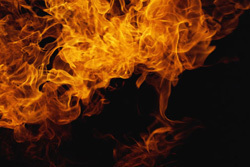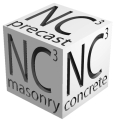
Concrete Masonry does NOT burn!
Concrete masonry doesn't burn, it's naturally non- combustible. The solid strength and protection of concrete block places a shield between your investment and the dangers of fire; providing the utmost in protections for you, your family and your business.
In addition to the many other advantages, lower fire insurance rates also make a strong case for choosing concrete block. Building with block is a smarter and safer way
to start.
Safer Does NOT Mean More Costly
An Executive Summary Report
Wall_Cost_Study.pdf
Adobe Acrobat document [1.5 MB]
For Individual City Studies...See our Cost Analysis page
What is NC3?
Balanced Design = Common Sense
Non-combustible concrete construction (NC3) and balanced design are essential to fire safety.
The concept of balanced design is that redundancy of fire safety systems provides the greatest safety for both property and life. Smoke detectors, sprinklers and non-combustible concrete construction (NC3) work together in balanced design to limit fire damage.
Detection
- Smoke detectors can provide early warning of fire, notifying those inside a burning building to evacuate.
- Smoke detectors also alert fire safety officials to trouble, which is especially important when residents are unable to call for help themselves.
- Detection alone does not provide adequate fire protection.
- Smoke detectors are easily affected by human error, such as improper maintenance or non-functioning batteries and they do nothing to limit the fire.
- Approximately 50% of fire deaths occur where there are smoke detectors present.
Suppression
- Sprinklers can help calm the flame until safety workers arrive and can keep small fires from intensifying.
- They can even help reduce damage during a fire.
- They were never intended to put out fires or to be the sole fire safety system.
- Sprinkler systems require diligent maintenance to work properly. There is always the possibility for malfunction, whether it is due to water shortages, system glitches or faulty installation. Sprinkler systems can actually fall prey to the fire; the pipes can melt.
- Most sprinkler systems do not sprinkler all areas, which limits their effectiveness.
- A study by the National Fire Protection Association found that sprinkler systems were deemed ineffective in 100% of health care or correctional facility fires and 81% of apartment fires because the agent did not reach the fire.
- The same study also found that sprinkler systems only operated and were effective in 22% of fires in educational facilities.
Containment
- Containment through the use of NC3 building materials controls fire and limits its spread.
- It provides a smoke and vapor barrier and limits the generation of toxic smoke and fumes.
- Most importantly, NC3 provides a passive protection system. Passive protection means that NC3 requires virtually no maintenance to provide outstanding fire protection. There are no batteries to change and the system is not dependent on any other system for functionality.
- NC3 walls are able to endure fire because they do not burn, unlike walls made of other synthetic materials or wood.
- They do not warp, melt or twist when enduring fire. In most cases they do not even need replacing after a fire.
While no system is 100% effective, the addition of containment to detection and suppression lessens the changes of fire related deaths and injuries as well as lowers property damages. The redundancy of detection, suppression and containment brings greater safety as each system’s weaknesses are covered by another’s strengths.
with text >>



